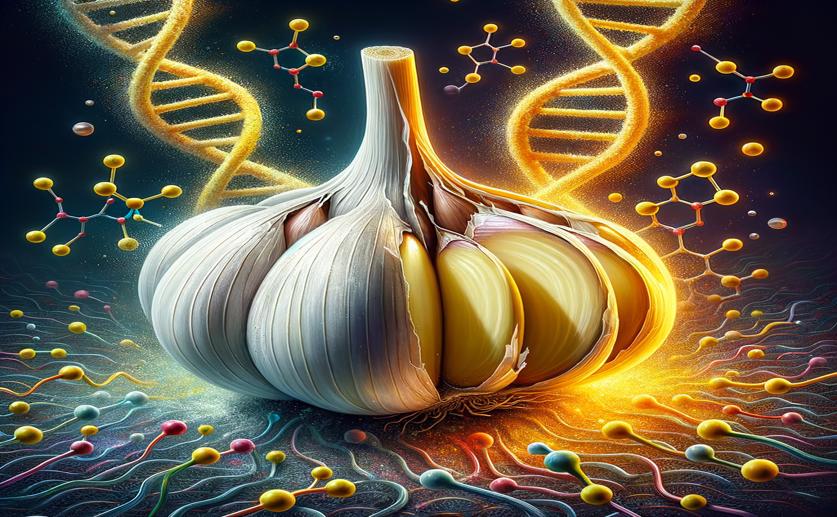
How Garlic Gets Its Kick: Gene Response to Sulfur
Greg Howard
28th March, 2024

Image Source: Natural Science News, 2024
Key Findings
- Researchers in Iran found genes linked to garlic's stress response and pungency
- The study showed high activity of genes involved in garlic's sulfur metabolism
- Insights from the study may lead to garlic with tailored pungency for health and industry
GeneticsPlant ScienceAgriculture
References
Main Study
1) Pungency related gene network in Allium sativum L., response to sulfur treatments.
Published 26th March, 2024
https://doi.org/10.1186/s12863-024-01206-0
Related Studies
2) Plants' Response to Abiotic Stress: Mechanisms and Strategies.
3) Differential expression of seven conserved microRNAs in response to abiotic stress and their regulatory network in Helianthus annuus.
4) Allicin Bioavailability and Bioequivalence from Garlic Supplements and Garlic Foods.
5) Silencing onion lachrymatory factor synthase causes a significant change in the sulfur secondary metabolite profile.



 14th March, 2024 | Jenn Hoskins
14th March, 2024 | Jenn Hoskins